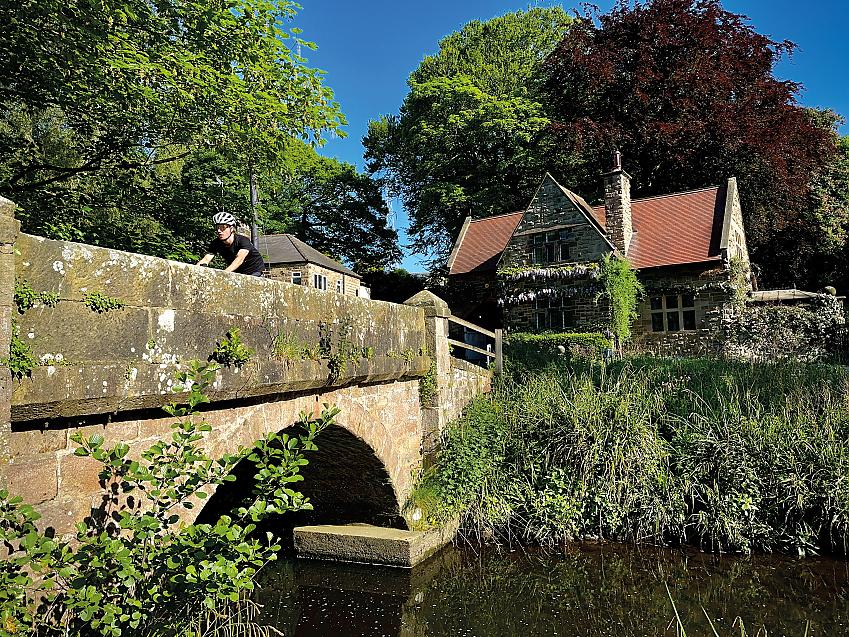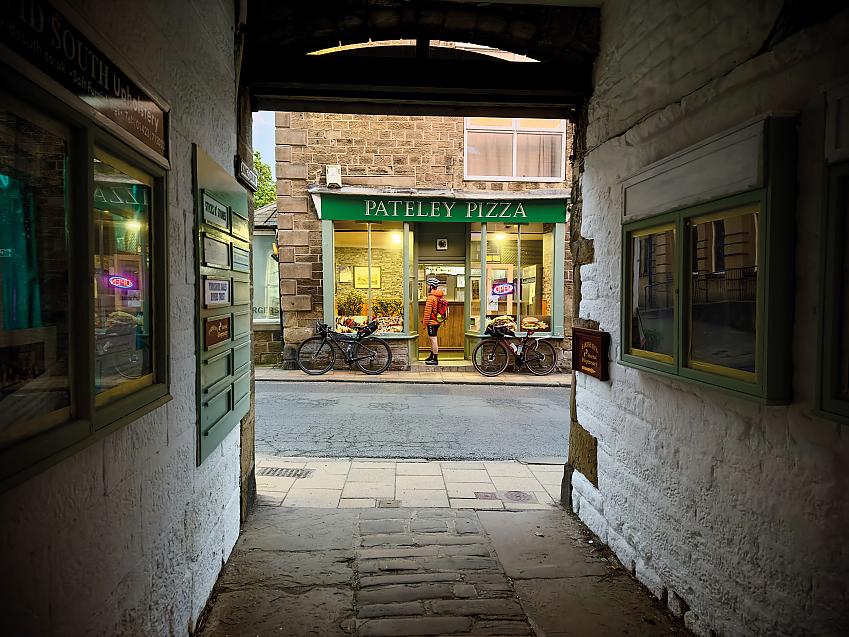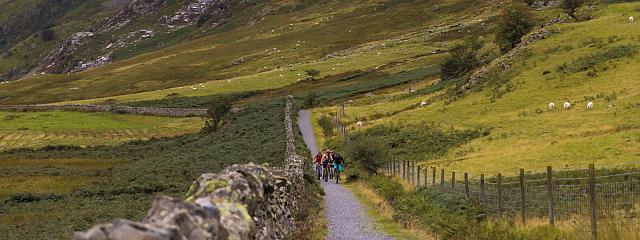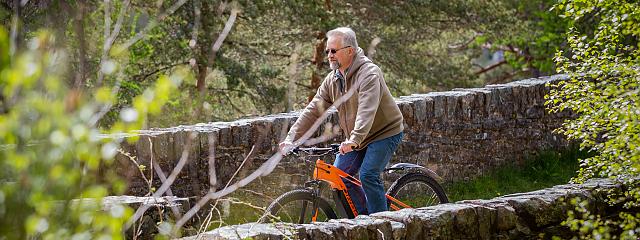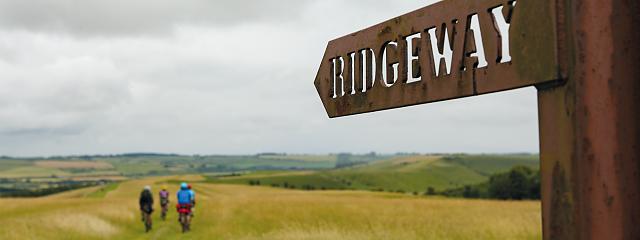
Great rides: Astray in Harrogate
Great rides: Astray in Harrogate
Opposite Harrogate’s Convention Centre there’s a small brass plaque erected in August 1953 to celebrate CTC’s 75th anniversary. Known as the Bicycle Touring Club when founded in 1878, it became the Cyclists’ Touring Club, or CTC, in 1883. Since 2016 the 145-year-old body has been known as Cycling UK.
This route starts with a multi-use rail trail, has a steep climb to a one-of-a-kind quarry sculpture, and ends at a plush hotel intimately connected with the birth of CTC. Along the way, the route skirts Brimham Rocks, a natural wonder that has attracted day-trippers for hundreds of years.
Pioneer cyclists certainly visited, paying sixpence for entry. Today it’s free for those arriving at this National Trust site by bike.
Harrogate was catnip to these pioneers. Accessible by train, it was a health resort with plenty of what a period cycling pamphlet described as “frolics”. CTC was one of many clubs which used to muster in Harrogate for a long weekend of rides, races and tent-based accommodation.
The North of England Meet and Camp ran for more than 20 years but wasn’t initially held under canvas. Instead, the first few meets were hotel based. The original event HQ hotel still exists, and this is where the inaugural CTC members stayed in 1878.
Today the West Park Hotel welcomes cyclists. Its walls are adorned with cycle art, and there’s a penthouse suite dedicated to the Tour de France’s visit to the town nearly 10 years ago. But in 1878, back when it was the Commercial Hotel, all cyclists were banished after some tussled with troops. The 2nd West York Yeomanry Cavalry was in town to parade; pioneer cyclists were there to ride – and party.
Harrogate was the perfect location for circular day rides, including short ones to Knaresborough and longer ones to York, Ripon and beyond to the Yorkshire Dales. The minor roads on this ride would have been familiar to the pioneer cyclists.
More usually they would have ridden on direct routes such as today’s A59. High-wheelers (almost all of whom were men) would have had this and other such main roads primarily to themselves because the motor car was yet to be born.
Into the hills
Starting at Harrogate Convention Centre, it’s a wiggle through town to an Asda car park and the start of the traffic-free Nidderdale Greenway. This rail-trail leads out to Ripley and its triangular sculpture, which was erected for the Tour de France’s visit in 2014.
There’s little traffic on the country lanes north from Ripley, and it’s undulating before a descent into the Brimham Rocks enclosure. “Cyclists are welcome on [the] main track to the visitor centre,” says the National Trust website.
Leaving the site’s weirdly shaped rocks, more undulations lead to Pateley Bridge. Stop for refreshments: you’ll benefit from an energy boost because the road onward is a lung buster. Signs at the base of the climb warn of slow cyclists for two miles. (I felt I’d been seen.)
The destination is the compelling Coldstones Cut artwork, a monumental walled structure with a contemporary streetscape, built on the high and remote Greenhow Hill in 2010 by artist Andrew Sabin as a viewing platform over Hanson Aggregates’ road-stone quarry.
Victorian cyclists had a close affinity with road stone. They wanted smooth, firm road surfaces for their new pastime. Along with the forerunner to today’s British Cycling, CTC created the Roads Improvement Association in 1885, which lobbied for better roads several years before motorists took over the organisation.
The cyclists’ desire for good roads had been there from the start, with the proposed Bicycle Touring Club seeking to provide would-be members with national information on road surfaces.
All cyclists were banished after some tussled with troops. The 2nd West York Yeomanry Cavalry was in town to parade; pioneer cyclists were there to ride – and party
The Bicycle Touring Club is born
Better roads and the other aims of the BTC were fleshed out by three young men beneath a spreading chestnut tree in Harrogate’s Spa Gardens over the August Bank Holiday weekend of 1878. On the Monday, the club’s first rules were accepted by the 50 or so high-wheeler touring cyclists who were part of the larger gathering of the clans that spent almost half a week in Harrogate for the second annual North of England Meet.
Harrogate’s Spa Gardens – sporting two bandstands, a skating rink, terraces and rose gardens – were at the rear of the Royal Spa Concert Rooms, or Spa Rooms. This classical-style building with Doric columns was the probable location for the club’s inaugural meeting.
An early history of the club says the meeting was held in a board room but doesn’t mention the venue; a linked mention of the Spa Gardens leads me to think the board room was in the Spa Rooms. Demolished in 1939, the building’s plot and gardens became exhibition grounds as the by now jaded spa town of Harrogate reinvented itself as a conference destination.
Today the site is the entrance to Hall M of the 1990s-era Harrogate Convention Centre. The building’s Doric columns are reproductions; the originals were moved in 1964 to RHS Garden Harlow Carr on the edge of Harrogate, where they still stand today.
The first two North of England Meets were held opposite the Prince of Wales Hotel, a former coaching inn overlooking the western part of the Stray, Harrogate’s expansive grassy common.
No doubt some cyclists stayed at this posh hotel (which was converted into residential flats in 1960) and others along the Leeds Road, such as the Coach and Horses, the Golden Lion and the Clarendon. According to an 1890s pamphlet, though, it was the Commercial Hotel which was the club’s night-time HQ.
“The North of England Bicycle Meet took place yesterday at Harrogate under favour of fine weather,” reported the Leeds Mercury, August 1878. “The clubs mustered on the Stray, opposite the Prince of Wales Hotel, at half-past twelve,” continued the newspaper.
This army of cyclists, most dressed in the military-style uniforms favoured by early cycling clubs, were in town at the same time as the real army. “The 2nd West York Yeomanry Cavalry marched into Harrogate on Monday,” reported the Mercury.
High wheels, high jinks
According to memories published 20 years later in a souvenir booklet, many of the cyclists, and some of the Yeomanry Cavalry, stayed at the Commercial. After midnight, the two groups fought a bruising mock battle at the head of the stairs, with mattresses erected for barricades and pillows deployed as feather-filled weapons.
There’s no record of who won this battle but members of the Yeomanry discovered their tall boots filled with water the following day, and at least one of the cycling combatants was found comatose, wrapped in a ripped-down Union Jack.
These high jinks were booze fuelled (a Scottish club reportedly brought a barrel of whisky), and the resulting damage led to the banishment of cyclists from all of the hotels of Harrogate in subsequent years. Meets after that were held under canvas, with attendees sleeping in large tents in a field next to the town’s cricket ground.
Squint and their view of the Stray remains. Imagine the grassy tract filled with flapping flags, tents and marquees, and high-wheel riders.
A high-wheel machine of a different kind can be found adjacent to Coldstones Cut: an oversized mountain bike built to celebrate the Tour de France’s passage through Yorkshire in 2014 and shod with gargantuan earthmover tyres.
Fact file
Astray in Harrogate
Distance: 62km (38 miles).
Route: Start and end in Harrogate, looping out to Coldstones Cut via Pateley Bridge.
Conditions: Mostly tarmac roads, suitable for year-round cycling. Gravel track to Coldstones Cut.
Maps/guides: Route plotted on OS maps using the Outdooractive iPhone app. GPX available.
I’m glad I had: A drone for the spectacular reveal of Coldstones Quarry.
Video by Josh Reid
Next time I would: Pay more attention to route profiles…
Further info: The Coldstones Cut, Brimham Rocks, Roads Were Not Built for Cars by Carlton Reid (pub Island Press 2015).
West Park Hotel
The Commercial Hotel beside the West Park part of Harrogate’s Stray was built in 1838, replacing an earlier coaching inn on the Harrogate to Leeds turnpike road. It was renamed as West Park in 1899.
The hotel’s flagship suite is the £300-per-night Le Grand Depart penthouse that commemorates the 2014 Tour de France kick-off stage, which finished metres away.
Even though this hotel played a starring role during the foundation of what became Cycling UK, I haven’t found it mentioned in any cycling history book.






